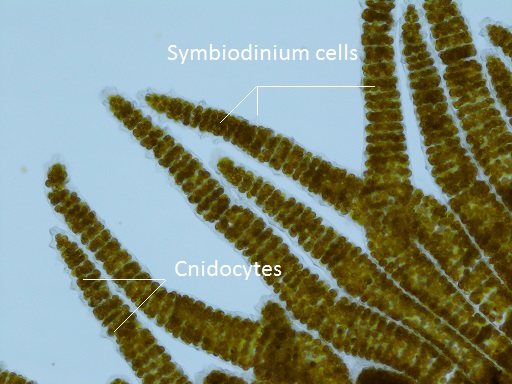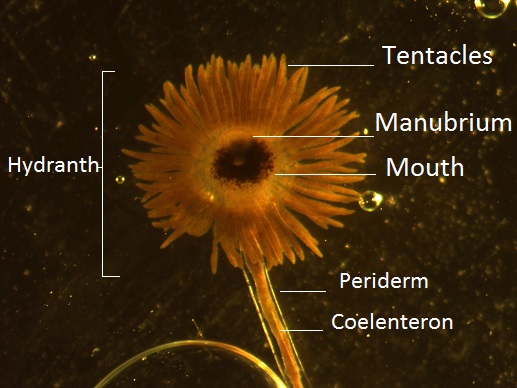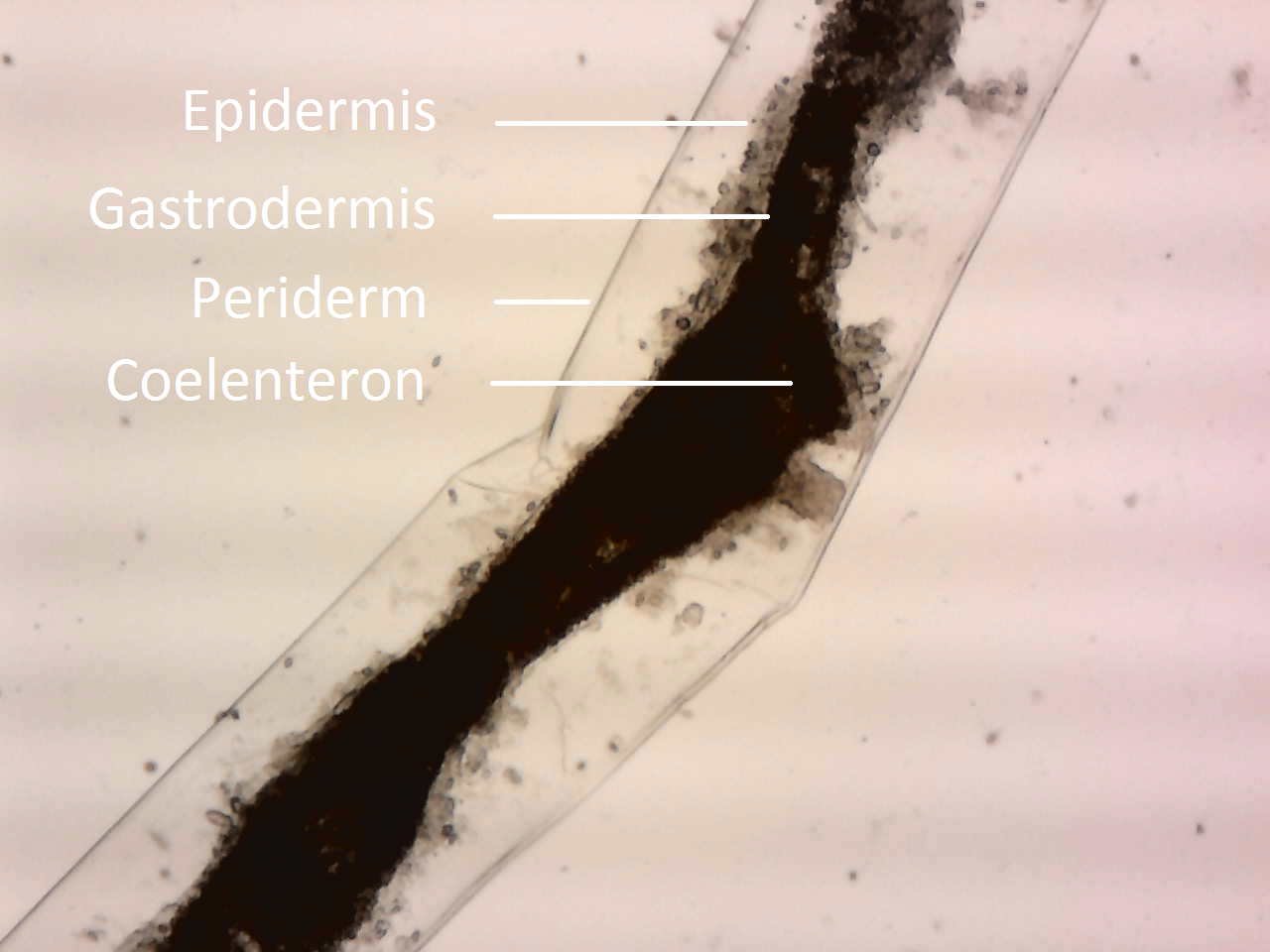Life History & Behaviour
As sessile organisms, Myrionema hargitti must rely on water currents and the efficiency of their numerous tentacles to capture prey items. As described in Anatomy and Physiology, these tentacles are covered in cnidocytes and densely populated by Symbiodinium cells. As such, they serve a double function in both prey capture and photosynthesis.

Figure 4. Myrionema hargitti tentacles, with cnidocytes and Symbiodinium zooxanthellae.
The tentacles move captured prey items into the bulbous manubrium, or hypostome, located at the centre of the oral disc. The food is then broken down by enzymes and passes into the coelenteron (Ruppert et al 2004). Due to its fruticose structure, the entire colony is connected by stolons and stems. As such, nutrients are transferred and circulated between individuals.
 
Figure 5. A Myrionema hargitti hydranth, showing its interior coelenteron.
In this investigation, the species has only been observed in a sessile colonial polyp form. However, past research on a population in the North Atlantic off the shore of Belize demonstrated a free-swimming medusa form, identified during its reproductive season between May and June (Spracklin 1982). During this period of sexual maturity, both gonophores and medusa buds were observed.
While these were not present in the specimens studied, this is likely because the organisms had not reached reproductive maturity. Instead, the process of asexual budding is likely the primary method of development. Further studies during its breeding season in the Southern hemisphere—October to December—would perhaps allow better observations.
|